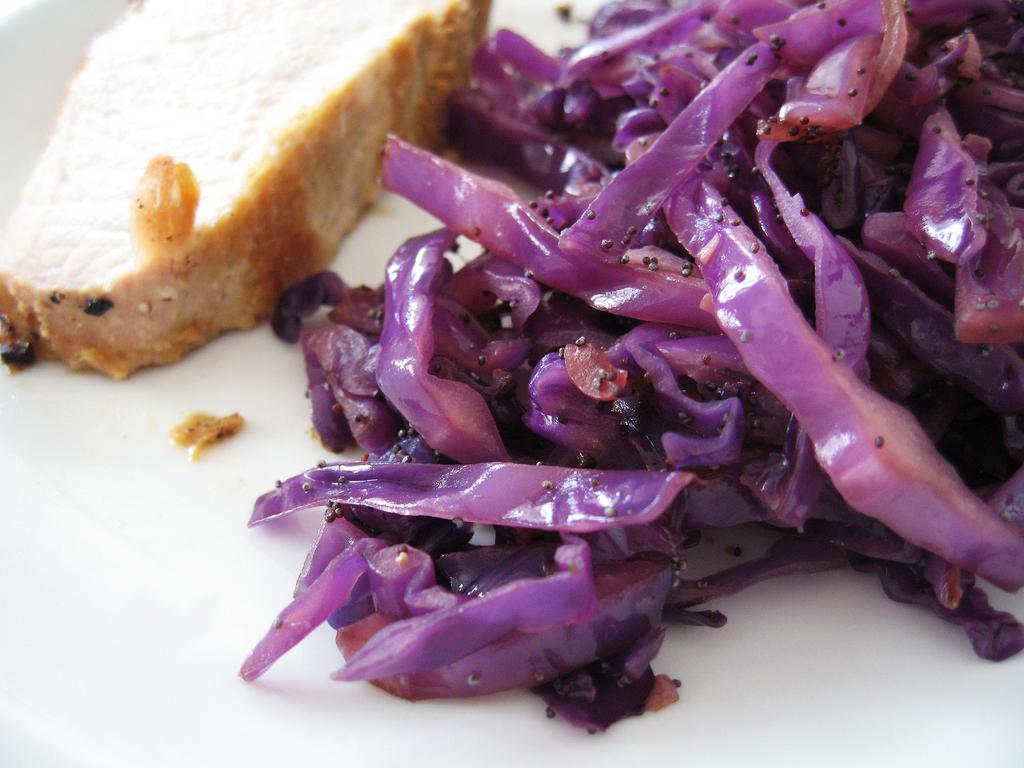5 Mins Read
Having a few bites of a fermented food with a meal can help with digestion and overall health. Packed with good bacteria, the easiest fermented food to make is sauerkraut, it requires no fancy ingredients, tools or skills. Ferment expert Jacqueline Renee Cohen of LantauMama shows you how to make it and how to serve it. Her recipe is a 20 to 30 minute affair, resulting in enough probiotic filled kraut for one to three months- depending on how much of the stuff your household gets through. One thing to keep in mind at all costs- sauerkraut should never be heated. Once exposed to heat, all the probiotics die and the health benefits disappear.
Basic Sauerkraut Recipe
Ingredients
- 2 heads of cabbage (approximately 5 lbs / 2.3 kg), we like to mix one white head and one purple head as the kraut turns a gorgeous pink hue but keeping it all white works too.
- 1-2% of the total weight of the cabbage in Celtic sea salt or pink Himalayan salt (around 2-3 tbsp for 5 lbs of cabbage)- any unrefined, unprocessed high mineral salt will work.
Directions
- Start by putting aside two full size large cabbage leafs to use later.
- Next, slice the remaining cabbage into thin strips, using a knife, a food processor or a mandolin.
- Place the sliced cabbage in a large bowl, sprinkling the salt as you go, in order to encourage the cabbage to release its juices. Let it sit for around 5-10 minutes to make the next step easier.
- Use your hands to massage and squeeze the cabbage to continue releasing the naturally occurring liquids.
- Once you have enough liquid to cover all the cabbage, transfer your mixture into a large glass jar (mason jars work great).
- Cover with the whole cabbage leafs you set aside at the start, and press down so the cabbage is completely submerged by the liquid.
- You can opt to add a weight on top to help keep the cabbage down- a smaller jar filled with water works great or a size appropriate paperweight.
- Close the jar and let it sit for two to three days, whilst continuing to check on your cabbage and press it down below the liquid if needed.
- After three days, transfer the jars to a dark warm place to ferment for one to two weeks.
- After one week, make sure to taste it every few days. The taste will evolve as time passes and you should stop fermenting when you find the taste pleasant and not too salty.
- Finally, transfer to the refrigerator, where it will last for months, the taste mellowing with time.
A Few Extra Notes
- The time people ferment their sauerkraut varies, some people prefer it more crunchy and salty so they only ferment it for 3 to 5 days and then put it in the fridge. Others ferment it for weeks and months for a super mild tasting and soft-textured sauerkraut. Taste along the way and see how you like it best- there is no one size fits all answer!
- Don’t forget to start making your next batch before you finish eating the current one so you never have to go without.
- Regarding what variety of cabbage to use, they all work: Savoy, Chinese/Napa, Green/White, Red/Purple, Japanese/Flat Head or a combination of them. We use white and red in this recipe but it’s really up to you. Firmer cabbages like Savoy tend to create a harder kraut as compared to softer-leaved cabbages.
- Once again, please remember that if you heat sauerkraut, it will kill the probiotics – so always keep it cool or at room temperature! In Hong Kong, it’s probably best to keep it in the refrigerator.
How To Eat Your Kraut
If you regularly eat out, you will no doubt have noticed that kraut and slaw now make an appearance on every trendy Chef’s menu. But for those of us not used to eating sauerkraut on a regular basis, it can be a struggle to think of serving ideas- below we share easy to put together options for any time of the day!
Breakfast
Eggs cooked to your liking with a side of sliced avocado and a spoonful of sauerkraut is the perfect start to the day. The acidity of the kraut complements the basic nature of the eggs perfectly. Plus, filling up on healthy proteins, fats and ferments gives your body a lot of positive energy to keep you going until your next meal.
Lunch
Salads, wraps, sandwiches- all benefit from the tangy taste of a good homemade sauerkraut. Add a spoonful on top, or mix it in for an added probiotic burst with every bit. Here’s a perfect sando guide: bread/wrap/lettuce of your choice, grilled meat/poultry/tofu, homemade mayo and kraut. Innumerable variations but always delicious. If you regularly eat out at the office, bring a small jar of kraut from home so you can add a dollop no matter what you are eating- no excuses.
Dinner
Sauerkraut should always be on the dinner table, it is the ideal every-meal condiment along with cracked black pepper and high mineral salt of course. Versatile and wholesome, kraut goes with pretty much everything from rice bowls, noodle soups, curries, tacos/burritos, as an accompaniment to grilled fish or meat…the possibilities are endless.
Snacks
Gluten free crackers with cheddar cheese or mashed canned sardines topped with a spoonful of kraut are simple to make but packed with nutrients and very satisfying on the umami front! We also love to mix some kraut into our salsa before dunking our tortilla chips into it- it’s a surprisingly harmonious mix!
Photo credit: Repolho roxo via photopin (license), Making Sauerkraut via photopin (license), Tacos via photopin (license) and Bowl of white kraut via photopin (license).








